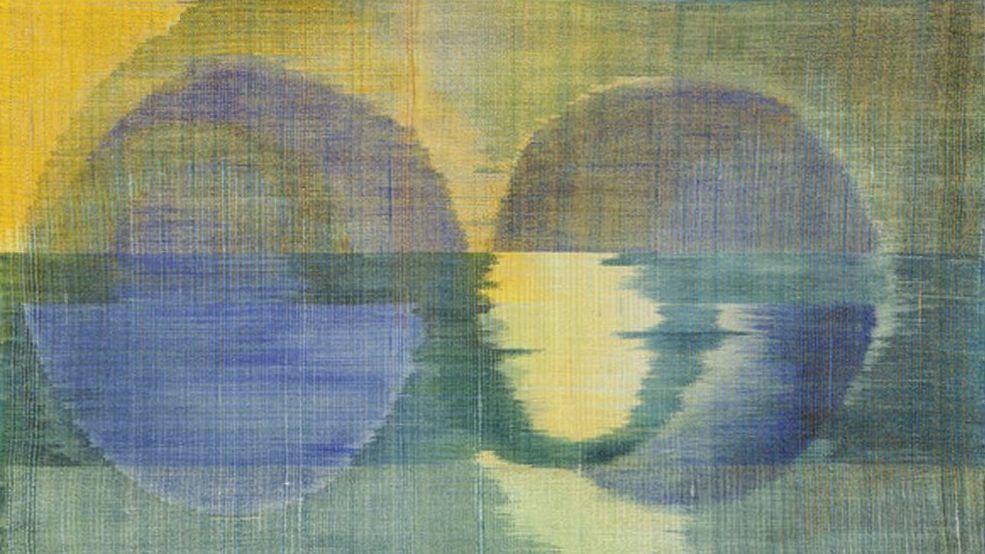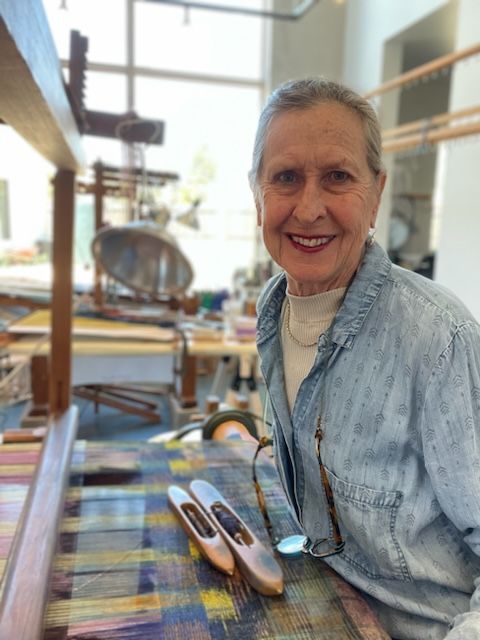Polly Barton


BIO
Polly Barton was born in New York City. She studied Art History at Barnard College and has lived and traveled in Paris, Florence, and Rome. In 1981 she moved to Kameoka Japan to study with master weaver, Tomohiko Inoue, living in the religious heart of the Oomoto Foundation. She returned to New York in 1982, married, and continued to weave on her Japanese tsumugi silk kimono looms.
In 1989, she and her husband bought land in Ojo Caliente, New Mexico. Their family moved to this remote area in 1992, where they lived for 15 years. They are now based in Santa Fe.
A nationally recognized artist, she shows her woven silk ikat paintings on both coasts, and is collected by the Art Institute of Chicago, Museum of Fine Arts, Boston and by important private collectors. Her work has been published in numerous magazines including Hali Magazine, FiberArts, Surface Design Journal and American Craft. She is a member of the Textile Society of America, Friends of Fiber Arts International, the Surface Design Association and the Textile Arts Alliance of Santa Fe.
This is a paragraph. Writing in paragraphs lets visitors find what they are looking for quickly and easily.
This is a paragraph. Writing in paragraphs lets visitors find what they are looking for quickly and easily.
This is a paragraph. Writing in paragraphs lets visitors find what they are looking for quickly and easily.
This is a paragraph. Writing in paragraphs lets visitors find what they are looking for quickly and easily.
This is a paragraph. Writing in paragraphs lets visitors find what they are looking for quickly and easily.
Name Lastname
Title
Name Lastname
Title
Name Lastname
Title
GALLERY
ARTIST STATEMENT
"In weaving, the warp is the vertical plane of resistance beckoning and challenging as does the blank canvas, the empty page, and the sculptor’s block. The weft is the horizontal element, the expressive potential in the hand of the artist. The woven thread carries the progress of time, knots tied in the past, dyed in the present, and the calligraphic line of future possibilities.
Fiber has memory and tells a story of its own as well as that of our collective tactile experience. Skilled and vigorous, each thread builds to construct a textile membrane of subtle energy, surprising as it emerges from the implicit grid of the loom.
I have been working with Ikat for over 30 years, exploring its endless possibilities and rich global heritage. A technique of binding skeins of yarn in calculated patterns before dyeing, ikat has enabled me to “paint” with the warp and weft creating layers of color as well as revealing the gesture in the hand and will of the artist.
Woven threads mark the progress of time and sustain our collective history. Listening to the subtle energy of textiles, I use color woven into color as a contemporary expression of ikat with the hope of keeping an ancient fiber technique alive."
TECHNIQUE
:
There are multiple forms of ikat: single, double, compound and pictorial. The process of ikat involves tying either warp yarns, weft yarns or both in a measured and pre- designed pattern. After the yarns are tied, they are dyed and can be tied one or more times to achieve many layers of color. Obviously the dyer moves from a lighter color to begin the process and ends with the darkest color as the last dye step.
The ties are then removed, the loom is dressed with the dyed warp, and the weaving can begin with the dyed weft yarns.
Ikat is found in many forms and in many cultures around the world identifiable by specific textile traditions. (It is called kasuri in Japan.)
I have used all the various forms of ikat over the years and examples of them are on view in the show at the Gravers Lane Gallery. They have all been woven on a narrow Japanese kimono loom, in plain weave. Working from a design, I weave with Japanese tsumugi silk, following in the traditional ways I was taught in Japan in 1980. Because of the narrow width of the kimono loom, the larger pieces were woven in panels and then pieced together. I have also used ikat in a tapestry format more in keeping with influences of living for 20 years in the Southwest and its dynamic weaving traditions.
I have taught the Ikat dye process in New Mexico, Penland, North Carolina and this summer at the Mid-Atlantic Fiber Association’s Conference in Scranton, PA. Workshops and private tutorials are also available in my studio in Santa Fe, NM.
All Rights Reserved
Gravers Lane Gallery
8405 Germantown Avenue
Philadelphia | PA 19118
+1.215.247.1603
Tuesday – Saturday: 11am – 5pm
Gravers Lane Gallery © 2024
GLG@1213
1213 Walnut Street
Philadelphia | PA 19107

















